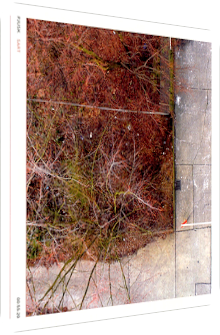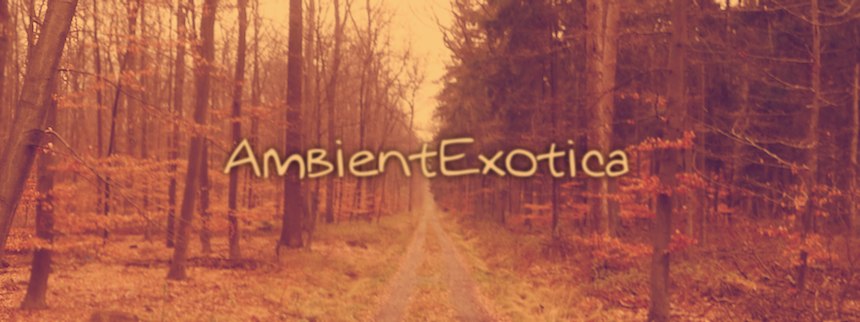
Pjusk
Sart
2007
Sart is the debut album of the Norse Ambient duo called Pjusk, comprising of Jostein Dahl Gjelsvik and Rune Andre Sagevik. Released on Taylor Deupree's 12k label in 2007, it is, to my mind, worth to revisit this important opus more than five years later, as only its contrast to the band's following albums Sval (12k, 2010) and Tele (Glacial Movements, 2012) unravels a DNA that is much more poignant than the sole genre-categorizing terms like, say, Dark Ambient, Drone or Glitch. Each of the 13 tracks contains a remarkable stylistic driving factor on a microstylistic level, and this very factor then fuels the impression of the whole album. I am talking about the state of twilight. Don't worry, I have not given away the secret potion or the key of understanding Sart! In hindsight, though, it becomes apparent that the band interweaves many contrastive, deliberately counteropposing and ambiguous particles: warm guitar layers meet crystalline Glitch slivers, a particular sound inherits the characteristic traits of both a string and a mallet instrument, and presumably uplifting rhythms invoke the far away Trance genre and marry it with a darker Ambient setting. Sart is a remarkably inventive debut, as Pjusk try to display a wide array of styles without turning the result into an overly varied hodgepodge that lacks cohesion. The opposite is the case, as I am trying to show below. I do not know if I succeed with my message, but it is important to me to explicate the stylistic twilight of the album without making it the ultimate raison d'être or only signature element of this release, as this is certainly not the case. A retrospective look at things one knows all too well can lead to false conclusions, so in order to at least prevent this mentioned term as a continuous marker, I will only bring it up again in the final paragraph.
Sart opens with a notably long track called Tander where the duo immediately unleashes a surprisingly Glitch-heavy anacrusis full of warbling lasers and frizzling streams. The added two-note bass fiddle floats in a portentous manner in-between the static noise drops and the glacial synth swirls which encapsulate both a pristine innocence and a doleful momentum. Downwards spiraling chime-like lead pulses waft through the lonesome Steppe. The last included element is an ecclesial organ of warmth which leads to chirping seagulls. Even if you consider Pjusk's whole work, the meandering setting of Tander and its deliberately stretched strolling stand out in terms of the interplay, as the structures and segues in-between the rustic melodies are as important as the memorable hooks. The following Kontur is even more solemn and paints a crystal cathedral thanks to its heavy reverb, the classic piano notes which conflate with the spectral echoes and the many vibraphone-esque pulses. Cross-fading with Kontur is Dur, a similarly majestic and iridescent gemstone. Its fragility is magnified by pink noise accents and short wooden eruptions which make Dur a bright but by no means uplifting track in the veins of Pjusk's release of 2012, Tele. The placid peacefulness is entrancing, as every element is clearly audible, be it the rising scene of that dentist's drill, the plinking snowflakes or the golden-glowing polyphony of a silkened synth burst. The bass vesicles return in the following Flyktig which showcases the duo's jazziest infusion of three double bass notes, intertwined rhythmic pops in tandem with acidic Glitch shards and wonky crevasse-traversing synth pads. Echoey announcements whirr in the background, and if Pjusk had revved up the tempo of this claustrophobia-boosting antrum, this would have become a dark minimal dance stomper. In its actual carnation, it oscillates between a serious depth and a playful quirkiness. A strangely hollow, alienating but intriguing track.
Ambient in the hands of Pjusk is a sponge, able to soak in many genres. Flyktig shows this, and Myk does too: slapped processed acoustic guitars provide scents of warm Arizona memories in an otherwise gelid synthscape full of cyan-tinted sine waves and gorgeously gloomy vibraphone droplets. Warmth and coldness meet, clash and depart, making this more of a vernal arrangement in the veins of the front artwork than a winterly infusion. The vibraphones really add a lot to the track and feel very balmy and soothing. While Rim continues the acoustic feel with warm bonfire guitar licks akin to Four Tet which make it the most blithesome interlude of the whole album, Vag throws the listener into a cove full of enigmatic temple bells and buzzing synth pads which rise from their dry infancy stage to a multitextured blissful state. Vinyl-like crackles and high frequency glitters illuminate this dreamy, non-threatening atmosphere of snugness and amicability. Sharing distant characteristics with the New Age genre, Vag is in fact one of my favorite pieces due to the emptiness that is so successfully bridged by the spluttering crackles. Gjelsvik and Sagevik return to upright frosty climes with an ignis fatuus called Rav; this composition does really flow like a dream, its catchily spiraling piano cascades, ghost-like chants by Elisabeth Lahr and twinkling bellbursts altogether creating a wondrous fairy tale diorama whose life-like existence is only purposefully perturbed by the crackling moiré on top of it. The omission of bass vesicles makes this concoction even friendlier and more enchanting.
The last phase of Sart moves into increasingly grim realms, but camouflages this fact with Hul, which is placed exactly right. Similar to the whitewashed wonderland of Rav, Hul returns to eery territories and is a gargantuan Dark Ambient offering, foreshadowing the spine-tingling mood of the album's follow-up Sval of 2010. Hul starts in an uneasy, mystifying fashion, but gets darker and more baneful with each minute. At first, it remains in literally grey areas, with misty vault-like rumblings, a rhythmically droning heartbeat and a magnificent infusion of multiple bell and chime layers. As soon as an acidic synth pad layer is introduced and underpinned by tremendously dusky synth waves, the formerly blueish tinge changes into red glows. An intimidating, fantastic piece! Anelse includes the boldest rhythm in the form of gentle shakers which gyrate around a monotonous, carefully arpeggiated drone bitterness, a filtered guitar melancholy and Elisabeth Lahr's infrequent muffled vocals. Frightening three-to-four note melodies boost the tension, and I am not sure whether they derive from a guitar or a synth. Their surface is simply bewildering. Rom is Pjusk's only tune with a steady 4/4 beat which accompanies the scary electric guitar ambience, the rising train brake-like machine ethereality and the ensuing silence which leaves room for the synth thicket and the gravely spoken word snippets to expand. An electric guitar is usually a spot-on instrument for pinpointing a Dark Ambient track, and Rom sure enough is one, as it provides the foggiest, least melodic soundscape of Sart. The flittering staccato of the brazen sparkles glows perniciously through the fog. It is yet another gorgeous piece. The superbly mellow Dempet and its postapocalyptic steel guitar-infused Ambient wasteland with howling wind gusts, soft snare drums and spacey sound particles cannot undo the dark and threatening atmosphere of the preceding tracks, and although the apotheosis of the outro Stadig reunites the friendlier luminosity of bubbling blebs with the graceful moon beam synths, the shift into sunless realms is consummated.
There is no doubt about the sheer brilliance of Pjusk's debut Sart. Despite the many ideas and rhythm-related differences, this is a beautifully hibernal Ambient album from the heart of Norway, depicting loneliness and isolated landscapes in a gloomy way. If I implied that Sart is a Dark Ambient album or a hibernal release, I would be a lackluster listener, as this is definitely not the case, at least not exclusively: there are many moments of a wonderfully shimmering opalescence, created with vibraphone-like instruments or lucency-rich chimes, blurry filters and glinting molecules. Heaviness and a lack of motion are successfully fended on many tracks, be it the mellow guitarscape of Rom or the blue-colored glitzy cave of Vag. Only in the last third of the album is the darkness boosted by calamitous drones and scary bass infusions. In hindsight, it turns out to me that Sart – despite its status as a debut – sits right in-between the gloominess of Sval and the pompous freezing-cold ice shelfs of Tele, foreshadowing and mediating between the angst and murkiness which are advected to large parts into these albums. Another important particularity comprises of the stylistic wideness: the Drone genre merges with the Glitch genre, infinitesimal but noticeable New Age traits meet the electric guitars of the Dark Ambient craze. I instinctively know that I have an interesting and aesthetically pleasing album in front of me when I cannot pinpoint the source of a certain sound. Did Gjelsvik and Sagevik use a real vibraphone or did they alter a bell or synth in such a way that it resembles this mallet instrument? Seeking for a definite answer is hopeless, as the – here comes the word I neglected to use throughout the body of the review – twilight state of Sart allows each sound to be at least two different things. I tend to think of it as a potentially soul-crushing and remarkably poeticizing release, but what I perceive as darkness, for instance the looming nothingness in the background, could well be interpreted as a state of innocence, of having a clear head due to a dedicated focus on a well-balanced soundscape. One thing I know for sure though: Sart is an essential Ambient album.
Further reading:
Follow Pjusk on Twitter: @Jostein and @Sagevik.
Ambient Review 156: Pjusk – Sart (2007). Originally published on Dec. 5, 2012 at AmbientExotica.com.
